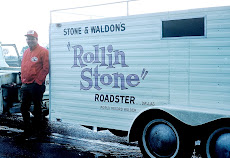




Next to motorcycles and cars, airplanes are
my favorite means of transportation. Especially
those planes from the 1940's thru the 1950's.
I recently finished work on this model of a
F4U Corsair. It was primarily a Navy/Marines
plane of World War II. Major Pappy Boyington and his Black Sheep Squadron flew the Corsair and the Japanese hated it. They called the F4U
"Screaming Death". It was developed in 1938
but did not come into active service until the
early 1940's. The Navy wanted a carrier-based
plane and the long propeller of the Corsair was
too long....so they angled the wing for more landing
gear clearance. The one photo is from the Korean War
in 1951 and the rest are of my model.
History: Development of the Corsair began in 1938, when the US Navy issued a request for a new single-seat carrier-based fighter. The Chance-Vought company won the contract with their unique, gull-winged airframe pulled by the largest engine then available, the Pratt & Whitney R-2800 Double Wasp. The wing design was necessitated by the tall landing gear which was, in turn, necessitated by the huge propeller required to propel the plane at the desired high speeds.
The prototype of the Corsair was first flown on 29 May 1940, but due to design revisions, the first production F4U-1 Corsair was not delivered until 31 July 1942. Further landing gear and cockpit modifications resulted in a new variant, the F4U-1A, which was the first version approved for carrier duty.
The Corsair served with the US Navy, US Marines, the Royal Navy's Fleet Air Arm, and the Royal New Zealand Air Force (and later, the French Aeronavale), and quickly became the most capable carrier-based fighter/bomber of the war. Demand for the aircraft soon overwhelmed Vought's manufacturing capability, resulting in additional aircraft being produced by the Goodyear Company (as the FG-1) and the Brewster Company (as the F3A-1). Production ceased in 1952. Over two dozen Corsairs are believed to be still airworthy, most in the United States.



No comments:
Post a Comment